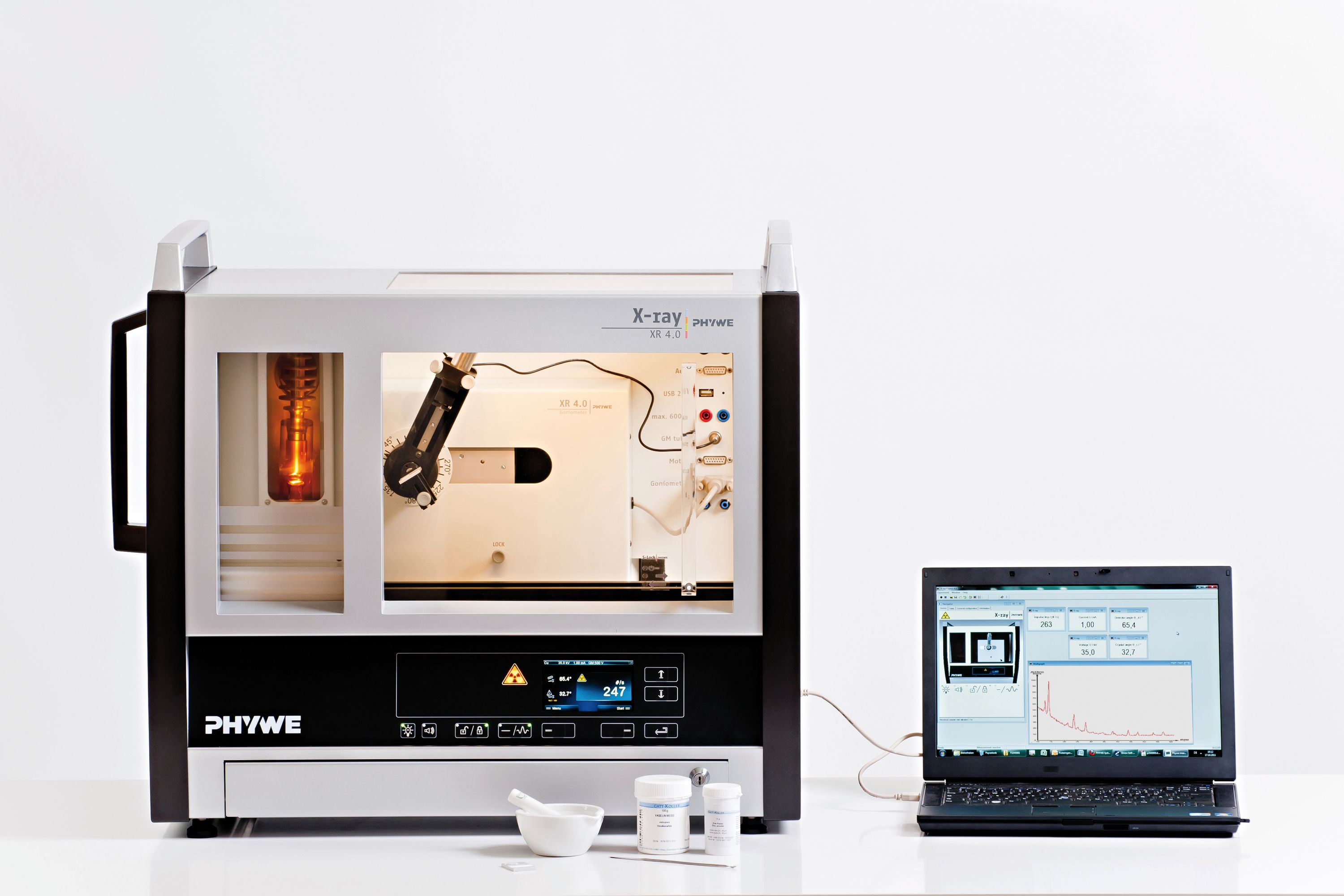Polycrystalline powder samples, which crystallize in the three cubic Bravais types, simple, face-centered and body-centered, are irradiated with the radiation from a Roentgen tube with a copper anode. A swivelling Geiger-Mueller counter tube detects the radiation that is constructively reflected from the various lattice planes of the crystallites. The Bragg diagrams are automatically recorded. Their evaluation gives the assignment of the Bragg lines to the individual lattice planes, their spacings as well as the lattice constants of the samples, and so also the corresponding Bravais lattice type.
Tasks
- Record the intensity of the Cu X-rays back scattered by the four cubic crystal powder samples with various Bravais lattice types as a function of the scattering angle.
- Calculate the lattice plane spacings appropriate to the angular positions of the individual Bragg lines.
- Assign the Bragg reflections to the respective lattice planes. Determine the lattice constants of the samples and their Bravais lattice types.
- Determine the number of atoms in the unit cell.
Learning objectives
- Crystal lattices
- Crystal systems
- Bravais-lattice
- Reciprocal lattice
- Miller indices
- Structure factor
- Atomic scattering factor
- Bragg scattering
- Characteristic X-rays
- Monochromatization of X-rays
- Bragg Brentano geometry
